4th January IBPS Clerk Quant Quiz
Quantitative Aptitude is the most dreaded subject among the aspirants. If one has to sail through any prestigious exam, quant is the ineluctable hitch. Due to the rising difficulty bar and complexity of questions, it has become necessary for students to be ahead of the examination pattern. Practicing from a different variety of questions can help you sail through any competitive exam. As IBPS Clerk Mains exam is approaching shortly, to help you tackle this section, Adda247 is providing you daily quizzes of Quantitative Ability with the number of updated questions on a daily basis to keep you updated with the difficulty level and types of questions that may be asked in the exam. So practice with the different types of questions to be in the race.
Directions (1-5): Study the following graphs carefully to answer the following questions.
The following table shows the total number of mouse produced by different companies in 5 different years.
The bar graph shows the percentage of defective mouse out of total produced by each company every year.
Note: In table some data are missing. Find them first if they are required in any question and then proceed.
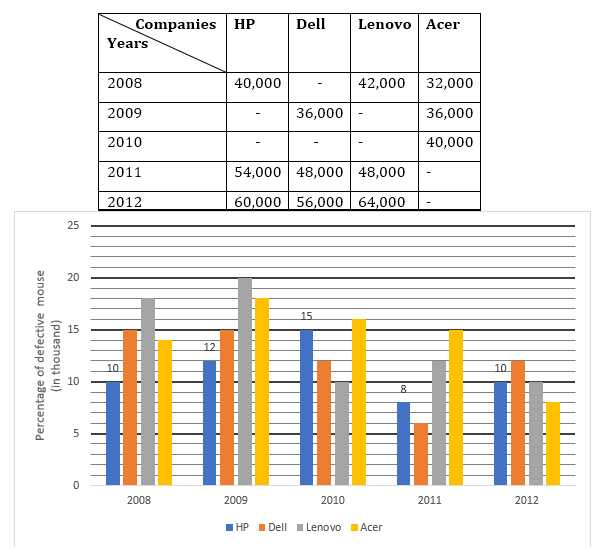
Q1. Total number of non-defective mouse produced by HP in the years 2008 and 2011 together is what percent more or less than that by Lenovo in 2010 and 2012 together. Total mouse produced by Lenovo in 2010 is 21.875% less than that in 2012. (find approximate value)
(a) 12.5%
(b) 16.5%
(c) 10%
(d) 18.5%
(e) 14.5%
Q2. What is the average number of defective mouse produced by Dell in the years 2008, 2010 and 2012 together? (It is given that ratio of mouse produced by Dell in 2008 and 2010 is 4 : 5 and total mouse produced by Dell in all the years together is 2,12,000)
(a) 4550
(b) 6440
(c) 5440
(d) 6550
(e) None of these
Q3. If production cost of one mouse of Lenovo company in all the given years is Rs. 60 then find the total loss of Lenovo company in 2009, 2010 and 2011 together. Average production of mouse by Lenovo in all the given years is 49,600 and number of mouse produced by Lenovo in 2010 is 6000 more than that produced in 2009.
(a) Rs. 8,62,800
(b) Rs. 9,63,600
(c) Rs. 12,73,600
(d) Rs. 11,73,600
(e) None of these
Q4. What is the difference between non-defective mouse produced by all companies in 2012 and 2011 ? Mouse produced by Acer in 2011 is same as that by Lenovo in the same year and mouse produced by Acer in 2012 is same as that by Dell in 2012.
(a) 34,560
(b) 32,450
(c) 32,960
(d) 38,460
(e) 35,580
Q5. Cost of one Acer mouse in all the given years is Rs. 90 and it is sold at a profit of 33 ⅓% in all the given years. Find the total profit earned by Acer on selling all mouse in all the given years. (use the data found in Que. 4)
(a) Rs. 24,65,600
(b) Rs. 18,75,400
(c) Rs. 28,75,200
(d) can’t be determined
(e) None of these
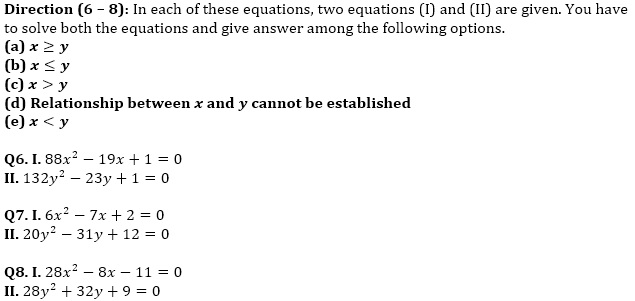
Directions (9-11): In the following questions, two statements (quantity 1 and quantity 2) are given. You have to find both the quantities and give answer
(a) If quantity 1 > quantity 2
(b) If quantity 1 < quantity 2
(c) If quantity 1 ≥ quantity 2
(d) If quantity 1 ≤ quantity 2
(e) If quantity 1 = quantity 2 or No relation between quantity 1 and quantity 2
Q9. Quantity 1: No. of days taken by P and R together to complete the whole work. P and Q together can complete a piece of work in 10 2/7 days while Q and R together can complete the same work in 13 1/3 days. Q is 25% more efficient than R.
Quantity 2: Total no. of days to finish the work. A is twice as efficient as C. B takes thrice as many days as A. C takes 12 days to finish the work alone. If they work in pairs (i.e., BC, AB, CA) starting with BC on the first day, AB on the second day and AC on the third day and so on.
Q10. Quantity 1: No. of extra days will the rest of the food last for the remaining soldiers in an army camp. There was sufficient food for 250 soldiers for 30 days. After 20 days 125 soldiers left the camp.
Quantity 2: No. of days taken by 10 men to complete the remaining project. 12 men can finish a project in 12 days. 18 women can finish the same project in 16 days and 24 children can finish it in 18 days. 8 women and 16 children worked for 9 days and then left.
Q11. Quantity 1: Difference between time taken by Ram and Rishi to swim 480m. Ram can swim twice as fast as Raju. Rishi can swim three times as fast as Raju. Ram can swim 480 m in 4/3 minutes.
Quantity 2: Time taken by all the three pipes together to fill the empty tank. The tank can be filled by two pipes P and Q alone in 46 min and 69 minutes respectively. There was a leak in the bottom of the tank which can empty the full tank in 92 min.
Q12. Two persons A and B are standing diametrically opposite on a circular track with a radius of 3.5 units. They start running in an opposite direction on the circular track and their speeds are 4 units/minute and 7 units/minute respectively. On meeting each other they take rest for half a minute and then start running with twice the original speed. In five minutes how many times will they meet ?
(a) 6 times
(b) 7 times
(c) 10 times
(d) 5 times
(e) 12 times
Q13. A man works twice as fast as a woman. A woman works twice as fast as a child. If 16 men can complete a job in 12days, how many days would be required for 32 women and 64 boys together to complete the same job?
(a) 2 days
(b) 3 days
(c) 4 days
(d) 6 days
(e) 8 days
Q14. Ravi travels 300 km partly by train and partly by car. He takes 4 hours to reach, if he travels 60 km by train and rest by car. He will take 10 minutes more if he were to travel 100 km by train and rest by car. The speed of the train is:
(a) 50 kmph
(b) 60 kmph
(c) 100 kmph
(d) 120 kmph
(e) 140 kmph
Q15. An alloy contains only zinc and copper. One such alloy weighing 15 gm contains zinc and copper in the ratio of 2 : 3 by weight. If 10 gm of zinc is added then find what amount of copper has to be removed from the alloy such that the final alloy has zinc and copper in the ratio of 4 : 1 by weight?
(a) 5 gm
(b) 5.5 gm
(c) 6 gm
(d) 4.8 gm
(e) 6.4 gm
Solution:
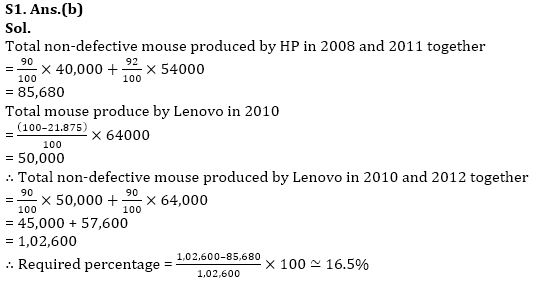
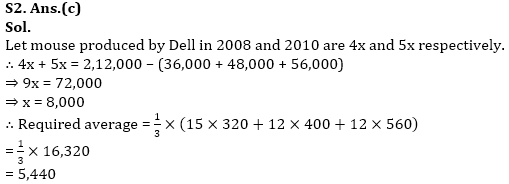
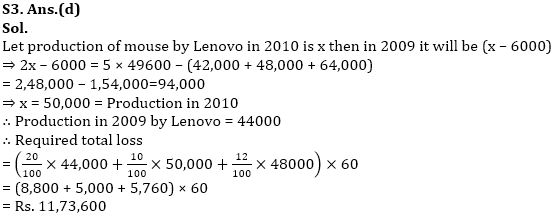
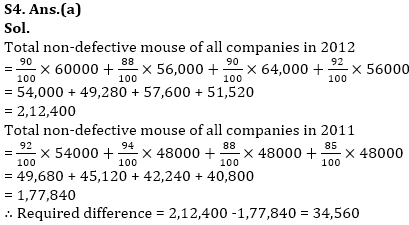
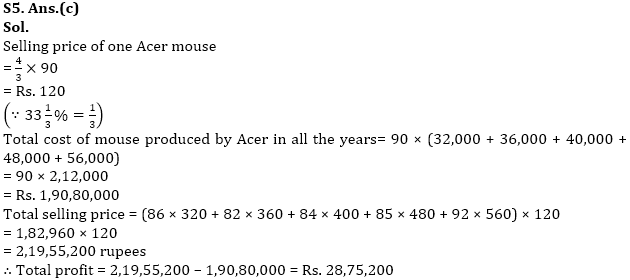
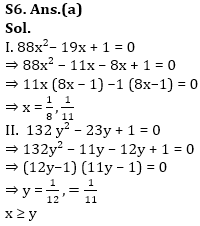
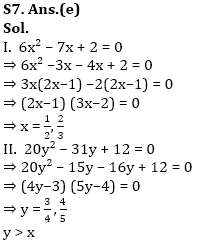
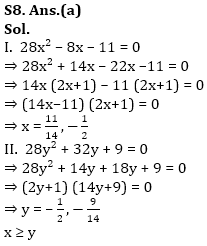
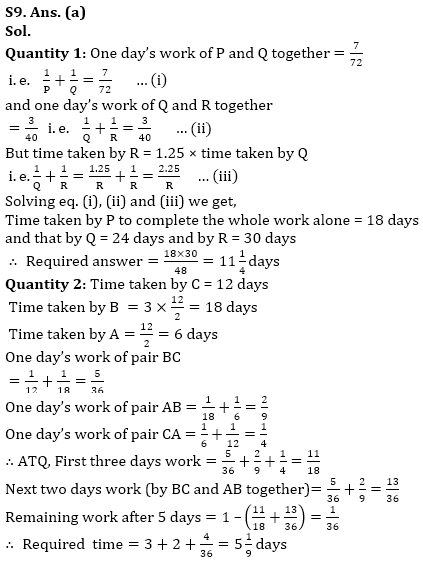
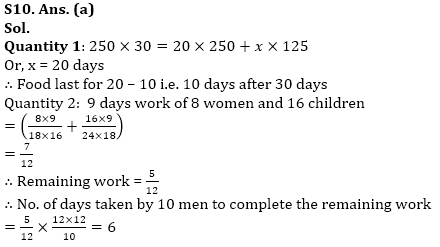
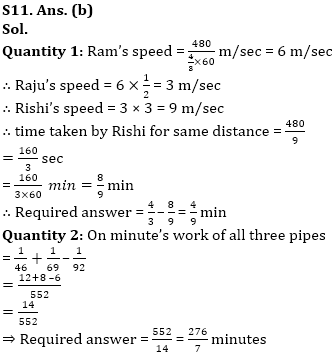
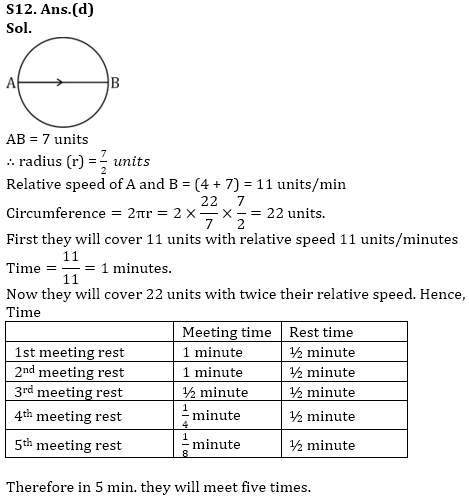
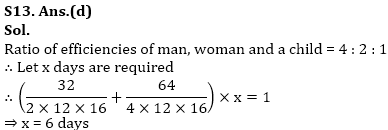
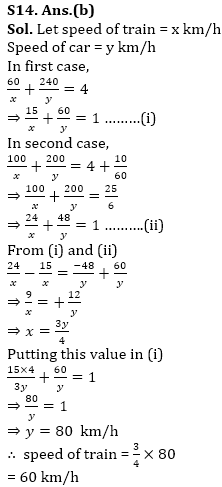
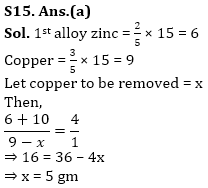
Quant Quiz for IBPS Clerk Mains 2019. Must Important Questions for IBPS Clerk Mains 2019.
Watch the Quant Marathan for IBPS Clerk Mains
You may also like to read:
- Quantitative Aptitude Quiz for Upcoming Exams
- Quantitative Aptitude Notes and Tricks for Upcoming Exams
Register here to get study materials and regular updates!!
All the Best BA’ians for IBPS Clerk Mains 2019!

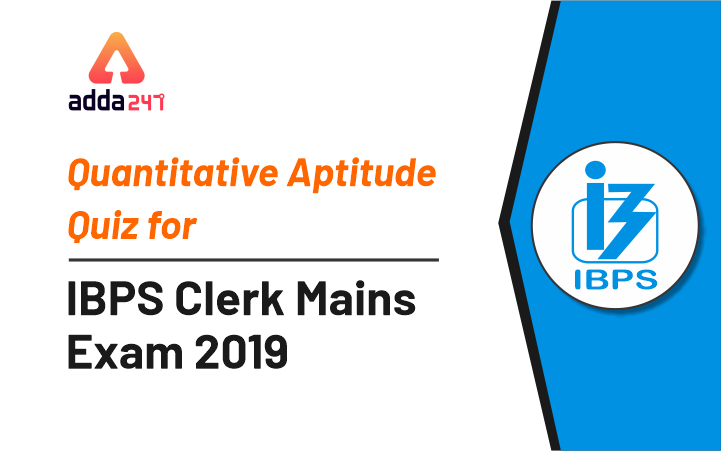



 GA Capsule for SBI Clerk Mains 2025, Dow...
GA Capsule for SBI Clerk Mains 2025, Dow...
 The Hindu Review October 2022: Download ...
The Hindu Review October 2022: Download ...
 SEBI Grade A Salary 2025, Revised Pay Sc...
SEBI Grade A Salary 2025, Revised Pay Sc...




